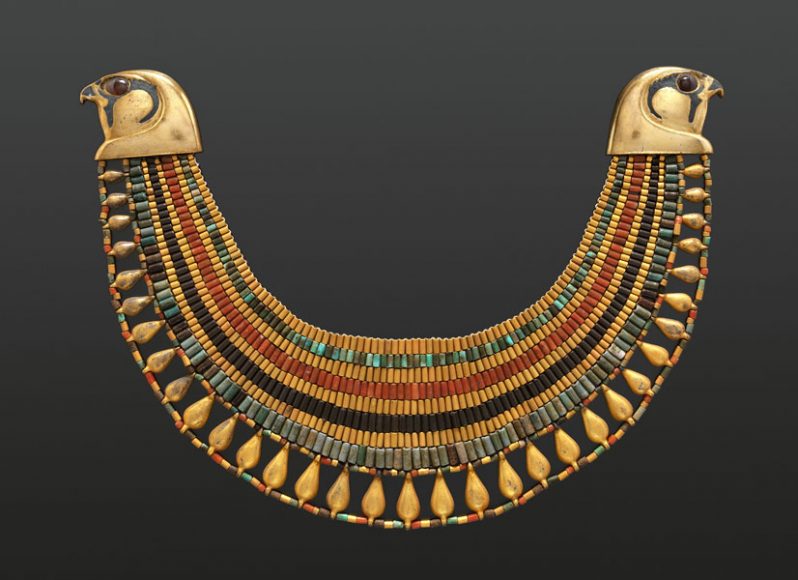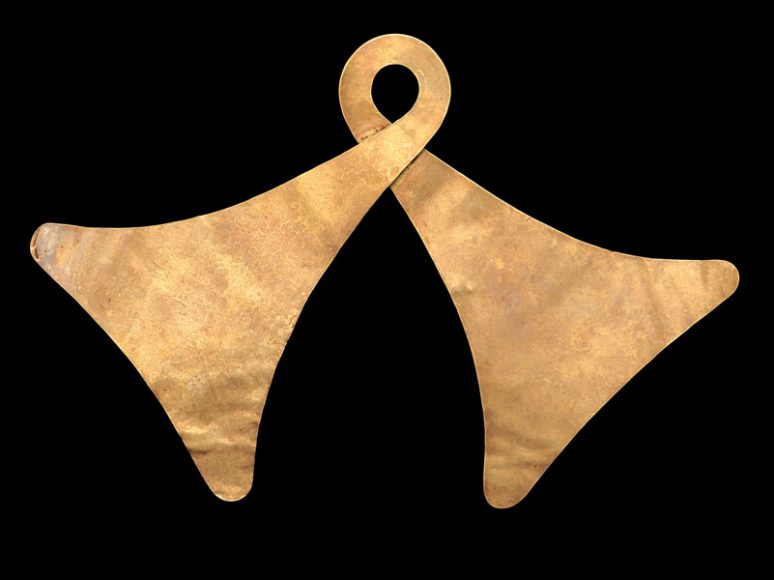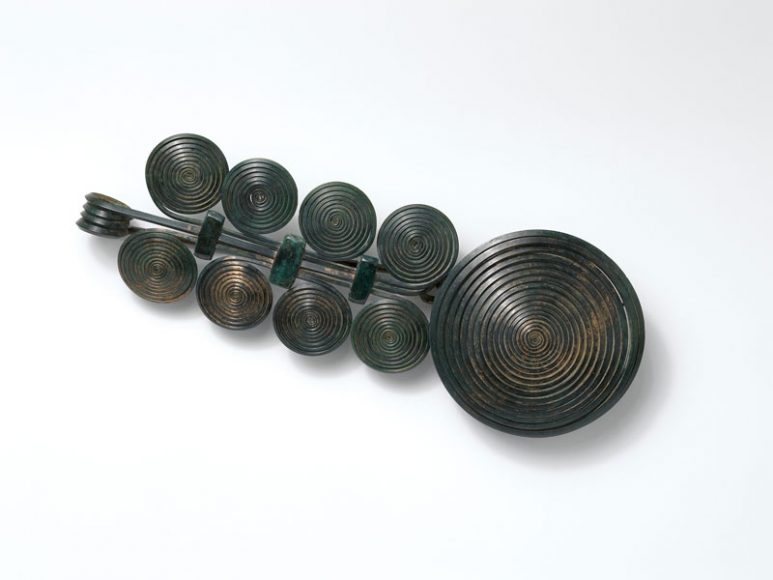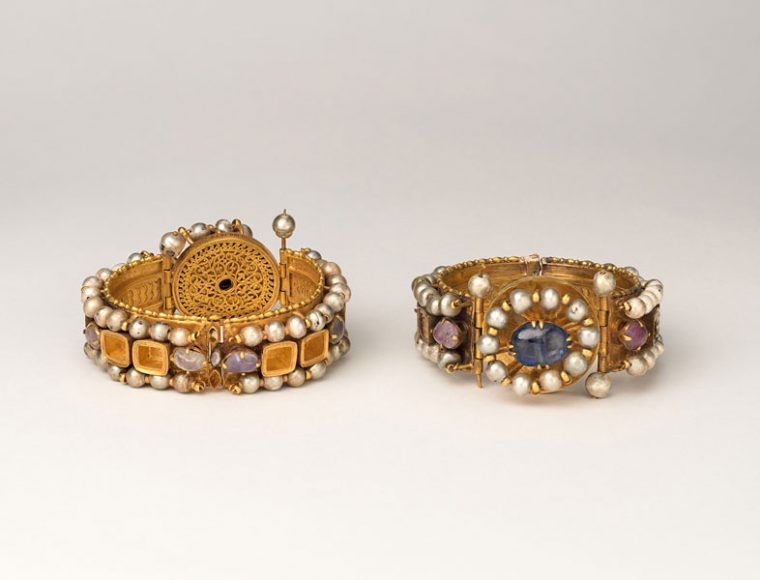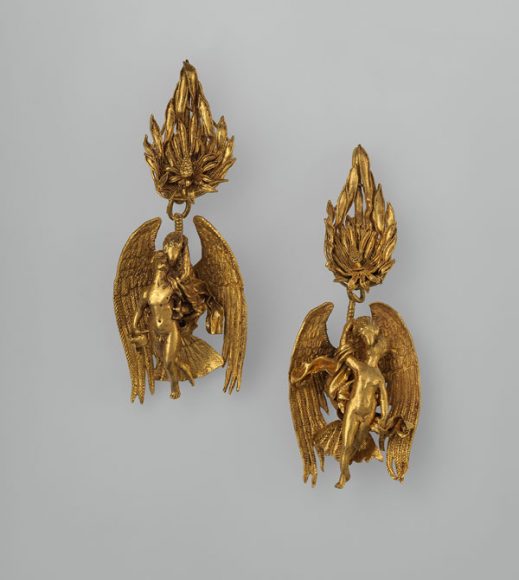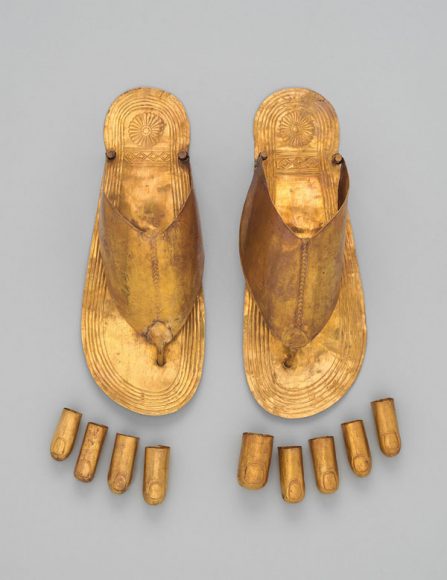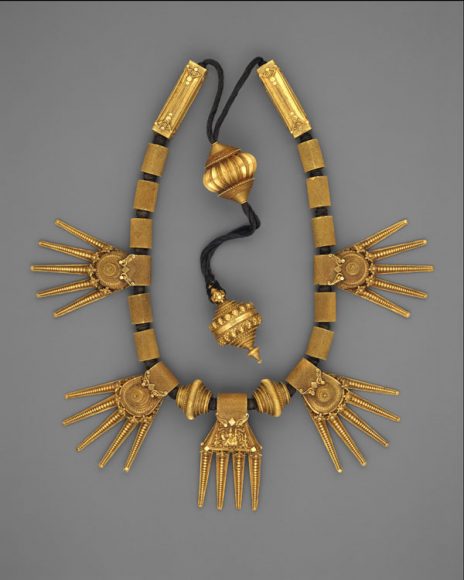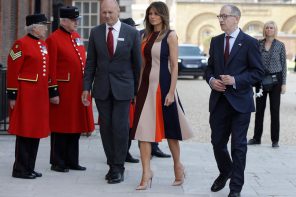There’s much more to jewelry than just picking out a pair of earrings to match an outfit, as a much-anticipated autumn exhibition is designed to show.
Exploring centuries of adornment as both a personal and universal form of art, “Jewelry: The Body Transformed” will open Nov. 12 at The Metropolitan Museum of Art on Fifth Avenue in Manhattan.
The expansive show, which will feature some 230 objects and nearly all from The Met’s own collection, will delve into what jewelry is, why we wear it and what meaning it conveys.
Visitors will be able to explore everything from headdresses and ear ornaments to brooches, belts, necklaces and rings, a diverse collection that will represent some five centuries of ornamentation along with sculptures, paintings, prints and photographs all gathered to add historical context.
As the advance press materials note, “If the body is a stage, jewelry is one of its most dazzling performers.”
IN THE GALLERIES
The exhibition is scheduled to open with a dramatic installation that will be created to focus on the universality of jewelry across time and various cultures, spotlighting how objects have long been created from precious elements to adorn the body. Here, viewers will see what’s been described as “great jewelry from around the world” offered in “a radiant display” themed around what part of the body, hair or neck, for example, it was designed to spotlight.
Then, the show will continue in a series of themed galleries, starting with “The Divine Body,” which will explore jewelry’s link to immortality.
Here, for example, will be a rare head-to-toe ensemble from ancient Egypt that was designed to adorn its privileged wearer into the afterlife.
How jewelry conveys rank and status will be the focus of “The Regal Body,” the next thematic area, where sapphires and pearls from Byzantium will be displayed along with ivory and bronze from the Royal Courts of Benin.
“The Transcendent Body” will then celebrate the spiritual elements of jewelry, with examples from cultures in which the designs have been used for purposes that include a way to conjure spirits or to appease the gods. Among the highlights are expected to be sculpted images and intricate Indian jewelry that showcases the role of gold ornamentation in Hindu worship.
In “The Alluring Body,” the focus will be on desire — as explored through a look at the way hair ornaments would convey a courtesan’s availability in Edo Japan to the eroticism of pearls in the Victorian era and beyond. Here, more contemporary jewelry designed by Elsa Schiaparelli, Art Smith, Elsa Peretti and Shaun Leane will be integrated to demonstrate the way in which artists can, advance materials tell us, “push the limits of glamour, courting danger and even pain.”
Finally, “The Resplendent Body” will look at the ways in which materials and technique have been combined for sheer ostentation. The examples will range from the opulent creations of the 16th-century Mughals through the elegantly detailed designs of legendary jewelry houses such as Tiffany and Lalique. In this section, work by contemporary designers including Peter Chang, Joyce J. Scott and Daniel Brush will also be included as examples of those who question the notions of luxury.
COMING TOGETHER
The expansive exhibition marks a collaborative effort of six curators, including lead curator Melanie Holcomb, curator, Department of Medieval Art and The Cloisters; consulting curator Beth Carver Wees, the Ruth Bigelow Wriston curator of American Decorative Arts, The American Wing; Kim Benzel, curator in charge, Department of Ancient Near Eastern Art; Diana Craig Patch, the Lila Acheson Wallace curator in charge, Department of Egyptian Art; Soyoung Lee, curator, Department of Asian Art; and Joanne Pillsbury, the Andrall E. Pearson curator, Department of the Arts of Africa, Oceania, and the Americas. They have been assisted by Hannah Korn, collections management coordinator, Medieval Art and The Cloisters, with Moira Gallagher, research assistant, The American Wing.
Related programming will be announced, with a lavishly illustrated hardcover exhibition catalog ($50) published by The Metropolitan Museum of Art and distributed by Yale University Press.
For more, visit metmuseum.org.

